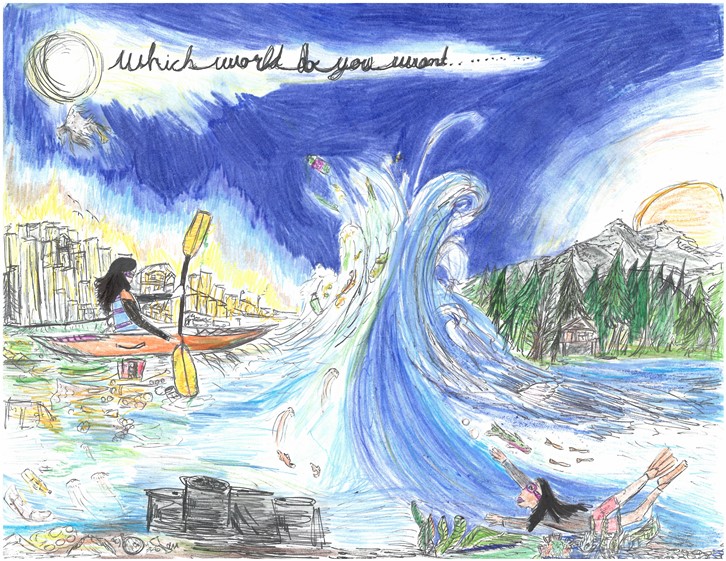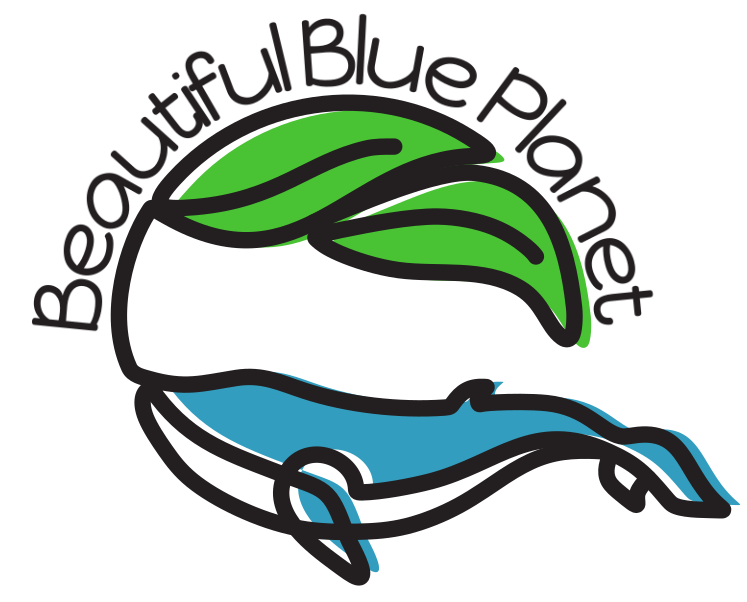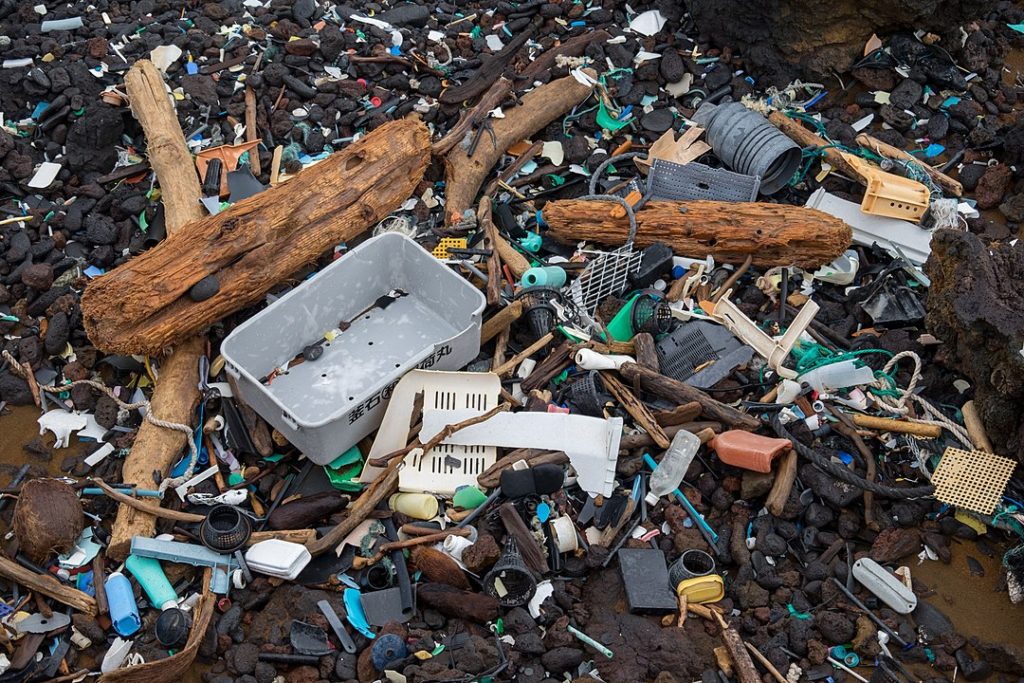How do they get there, what do they do, and how do we stop it?
Do you enjoy walking along the beach?
Is it beautiful and pristine where you go…or littered with plastic?
When I was growing up in New England I spent my summers at the beach and did a lot of beachcombing. I found so many beautiful seashells. I’d collect them and identify them. I found bizarre horseshoe crab shells, sand dollars, starfish, a host of seaweeds, and occasionally some beach glass—pieces of colorful glass with rounded, smoothed out edges and a matte surface from tumbling about in the sand.
I never, ever saw a piece of plastic on the beach or in the water.
Now when I go to the beach there’s plastic of all sorts on the sand. So I come prepared with bags to pick up every piece I find. It’s not a fun activity but I feel like I’m making a difference. I feel like I’m saving animals. And as you will see in a bit, I am!
Where I go in northern California, right off the shore I always see seals. In the whale migration seasons I watch for whales. In January gigantic elephant seals birth and nurture their young right on the sand, get their food from the water, and the fathers chase away human visitors. The ocean is rich with life and I love to see it.
A healthy ocean is essential for a healthy planet. Ocean phytoplanktons, tiny free-floating plants, produce about 75% of the earth’s oxygen. All planktons are at the base of the ocean’s food chain.
Animals of the sea and the shore often mistake plastics for food. Or swallow it inadvertently. Or get tangled in it and drown.
Plastic in ocean waters is an ever-growing problem.
How does it get there? What does it do to the oceans and its animals? And what can we do?
First let’s learn a little about plastics.
Plastics are not biodegradable
They’re made from oil. Small molecules, like ethylene, are isolated, heated, and treated to link together to make a polymer—a compound made of a long chain of the same molecules. A polymer of ethylene makes polyethylene, the most commonly produced plastic that’s used in many packaging products.
Plastic is very useful and is built to last. But it’s also why they are harmful to the environment. They simply don’t break down in nature—at least not easily and not fast enough. It can take hundreds or possibly thousands of years for nature to break them down. Though, some discoveries are being made that show some organisms can slowly break it down. But is it fast enough?
How much is there?
Over 300 million tons of plastic are produced each year. At least 14 million tons of plastic ends up in oceans each year. And each day about 8 million pieces of plastic enter ocean waters. Per year, that equals five grocery bags filled with plastic on every foot of coastline on the earth!
What problems do plastics in oceans cause?
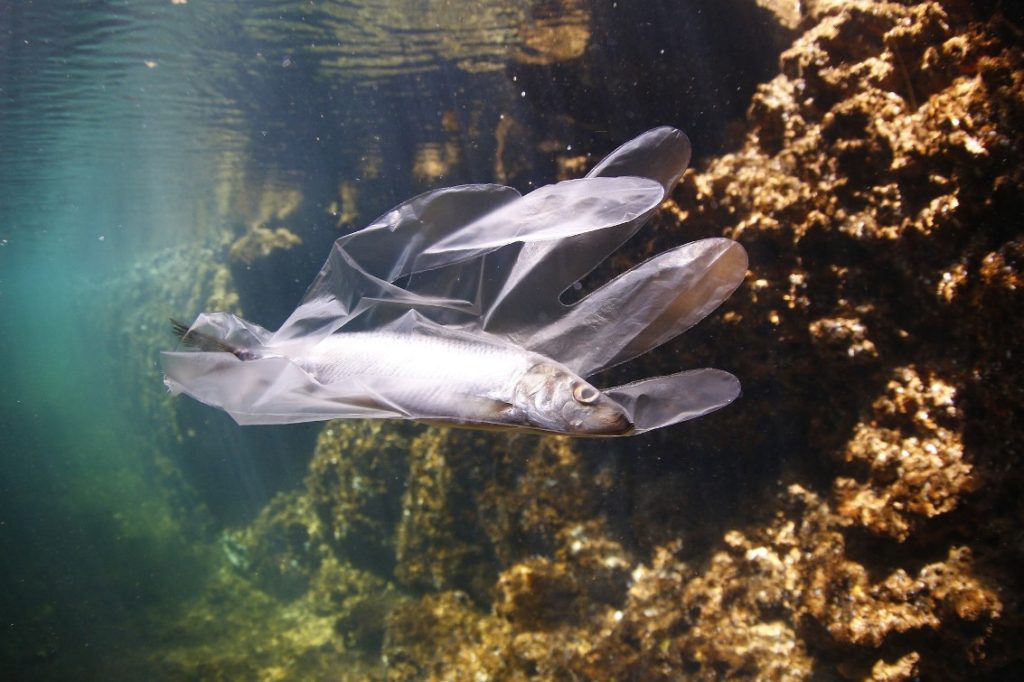
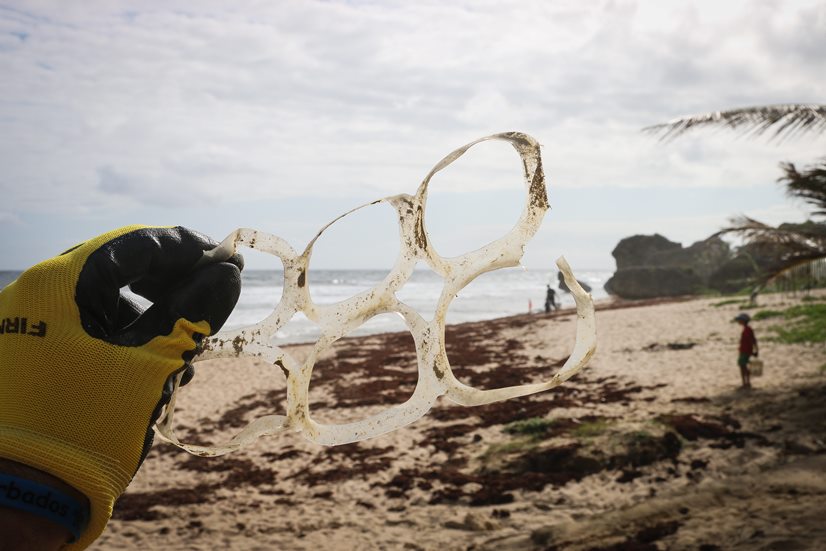
many marine animals. Credit: Brian Yurasits via
Unsplash
1. For one, they ensnare sea animals. You’ve seen the photos of turtles or sea birds with 6-pack rings around their necks or around their bodies restricting their growth and deforming them pitifully. Sometimes it’s whales or dolphins that become ensnared by old plastic fishing nets that prevent these mammals from coming up to the surface to breathe.
2. Smaller pieces of plastic are easily mistaken for food or are intermingled with food that animals need. The plastic fills the bellies of many animals: seabirds, like the albatross, fish, zooplankton, and on up to whales.
Baleen whales eat the smallest of ocean animals, mostly tiny zooplankton and small fish. Blue whales, the largest of all animals to ever have been on this planet, eat mostly krill—a zooplankton. They need to swallow about 8,000 lbs. of food each day for half the year, their feeding season, to build up blubber for energy for migration and breeding.
Instead of teeth, baleen whales use a big broom-like structure made of keratin like our fingernails are. They open their huge yawning mouths and scoop up everything in the water. Where they do this is where the zooplankton and small fish are in high quantities. Then they close their mouths and push out the water through their baleen. The baleen catches the small animals and plankton, much of which is krill, and they swallow it. More and more, that water contains pieces of plastic.
When animals eat the plastic it fills their bellies, keeping the animal from getting the food it needs. That leads to a slow starvation.
3. Larger plastics get physically broken down into smaller and smaller pieces and eventually become microplastics. Microplastics are plastic pieces less than 5 millimeters wide. They, too, get into animals, small animals, and even the tiny little zooplankton. These little animals are one of the most important food sources for all ocean life. If they contain plastics then every piece goes on up the food chain.
All the krill those blue whales eat? Microplastics are accumulating in their bodies.
Think about the big picture for a moment here. We are harming the species of the largest living creature to ever have lived on the earth, for at least 1.5 million years. What kind of reverence do we have for life? It’s important to understand the effects of our actions, both individually and collectively, and to live like all life on earth matters.
So far, micro and larger pieces of plastic are found in the bellies and the bodies of almost all sea animals: 59% of seabirds, 100% of sea turtle species, and over 25% of fish in seafood markets around the world…but it doesn’t stop there.
4. Plastic toxins leach into the ocean water and animal tissue. Additives are added in plastic manufacturing to give it special properties. One example, BPA (bisphenol A), which is in many plastics used in food packaging and storage, is strongly suspected to contribute a host of internal, reproductive, and endocrine problems and to be toxic to animals. See medical article for more.
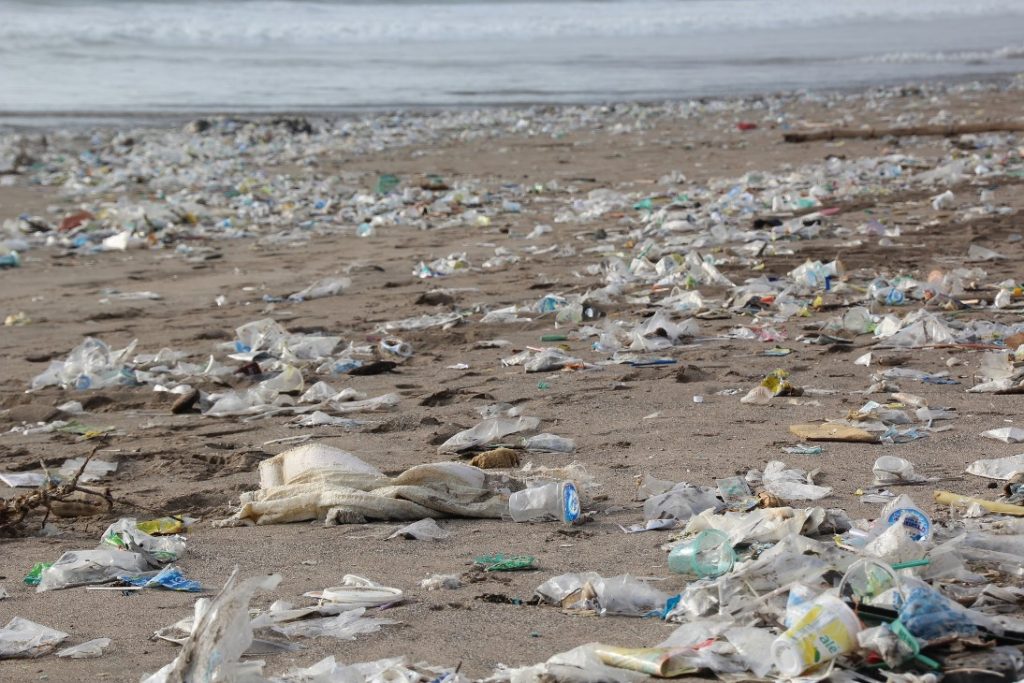
With plastic floating in ocean waters, these additives leach out into the water where plants and animals ingest it. And these chemicals leach into the bodies of those who inadvertently consume the plastics. These chemicals move on up the food chain and accumulate. This has significance to humans, too, many of whom rely on seafood for their diets.
5. Plastics on beaches hurts tourism. Many beaches are great tourist spots. But plastic trash on beaches is plain old ugly and destinations are taking a hit from that.
6. Plastic in oceans can move species to the wrong places. It’s s new concern being studied. Large pieces of plastic allow various forms of life to adhere to them. Many pieces end up floating long distances, carried by currents and prevailing winds. This can disperse animals and into new locations and potentially wreak havoc on other ecosystems.
How do plastics get into ocean water?
The main source is from waterways that reach the oceans. Plastic litter and debris on the ground gets carried off by wind and rain and can end up in streams and rivers, and get carried all the way to the ocean.
The main sources of plastic debris found in the ocean are land-based, coming from urban and storm water runoff, sewer overflows, littering, inadequate waste disposal and management, industrial activities, tire abrasion, construction and illegal dumping.
~IUCN*
This includes water from our households and industries that contain tiny microplastics that don’t get filtered out by water treatment plants. Most of these microplastics are from synthetic clothing fibers! (So take a look at what you’re wearing!) These easily get into the waterways that lead to the oceans.
Litter along beaches and tourist spots gets blown or washed into waterways and oceans.
One day I was at my favorite ocean spot on a cliff overlooking a secluded beach where elephant seals were gathered after birthing and the youngsters were playing. It was windy and I was eating my lunch, which included a plastic pouch bag of provolone cheese. A gust of wind somehow whisked the bag out of my hand and carried it out over the cliff (in the other direction from the seals, phew). I tried to catch it but…it was a cliff. I was mortified, doing the very damage I want to prevent. I knew it would land in the water. It’s an example of inadvertent plastic littering.

Most fishing nets and line are now made of plastic and are often lost or ditched at sea. These are the main cause of larger animal ensnarement.
A somewhat newer source: extreme weather events. Flooded homes and businesses from the torrential rains and tornadoes that we are experiencing more frequently scatters human made debris all over. And that often washes into waterways and oceans.
Plastics in oceans are found…everywhere
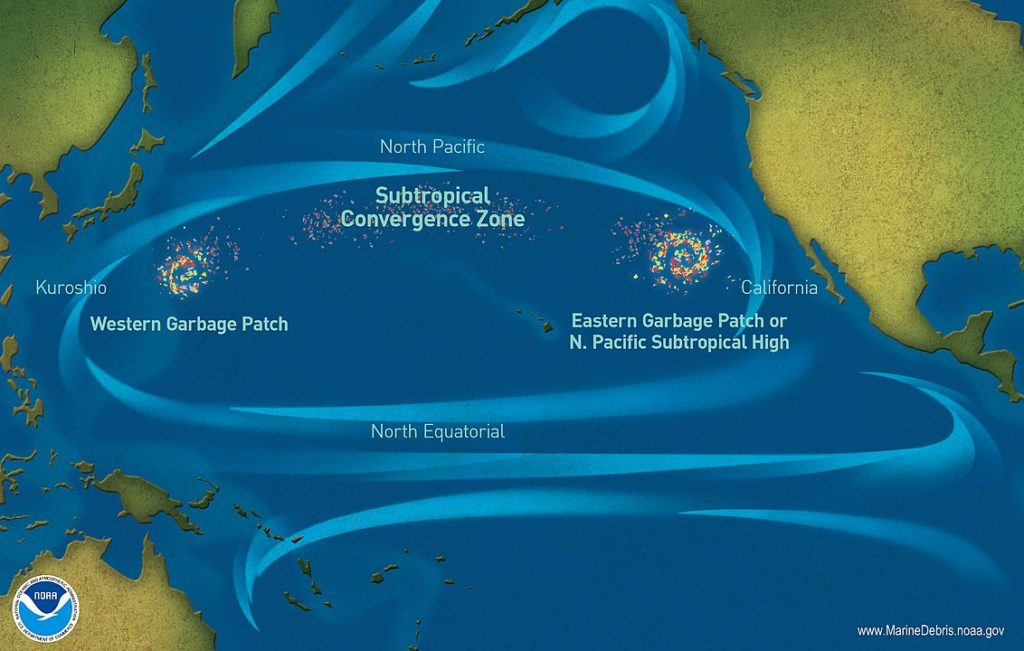
- They are now found in every ocean. From large to small pieces.
- They are found throughout the water column—from the surface waters all the way down to the ocean floor…even in the Arctic Ocean. Some plastic is denser than seawater and it sinks fairly soon, littering the ocean floor. Many pieces become covered by sea life, like barnacles, and get weighed down so they sink to the ocean floor. And they have been deposited in deep sea sediments since the 1950’s.
- They’re found on every beach around the world.
- They’ve created so-called garbage patch islands. Those infamous garbage patches, or gyres, are where a lot of plastic pieces have drifted by ocean currents and prevailing winds to create soupy, plastic “islands”. The first one in the Pacific Ocean was discovered in the early 1990’s. Now there are 5 gyres in 5 oceans.
- They’re found in almost all sea animals from planktons, the base of the ocean food chain to blue whales, the largest animals to ever have roamed the earth.
How and when it all started
Plastics were first manufactured during the Second World War. One of the first uses in oceans was for fishing nets and lines. They were much cheaper than those of natural fibers so they quickly came into common use during the 1950’s. This is where plastics in oceans started.
The first sighting was in 1957 in the Arctic Ocean by trolling nets that captured krill for identifying and counting them. These nets were carried on ships that were on a separate mission, but they hosted this scientific apparatus.
Next, in 1965 a plastic bag with an animal entangled was found. Into the late 1960’s more entanglements with, and ingestions of, plastics by were reported by sea birds and marine turtles, mostly in the North Atlantic.
That was the start of the ever-increasing appearance of plastic in ocean waters. Now there are many ships crossing the oceans and more are being used for identifying and quantifying ocean plastics.
Much of the ocean plastic is either fishing lines and nets, which entangle many animals, or it’s among a wide variety of discarded plastic items, the majority of which are single-use plastics like bottles, bottle caps, food wrappers, and plastic plates and cups.
Most of the plastic in oceans, 99%, lies on the ocean floor
Since the beginning of plastic manufacturing plastic debris has found its way into the ocean. Much may have started from the horrendous old practice of dumping waste from boats into ocean waters.
While some plastic floats and ends up in the gyres, much of it is denser than water or becomes laden with marine life that weighs it down and sinks it. The amount of plastic in ocean floor sediments has risen since the 1950’s just about exactly evenly with the rate of plastic manufacturing. Here’s an excellent, short video from Vox about what happens to much of the plastic in oceans.
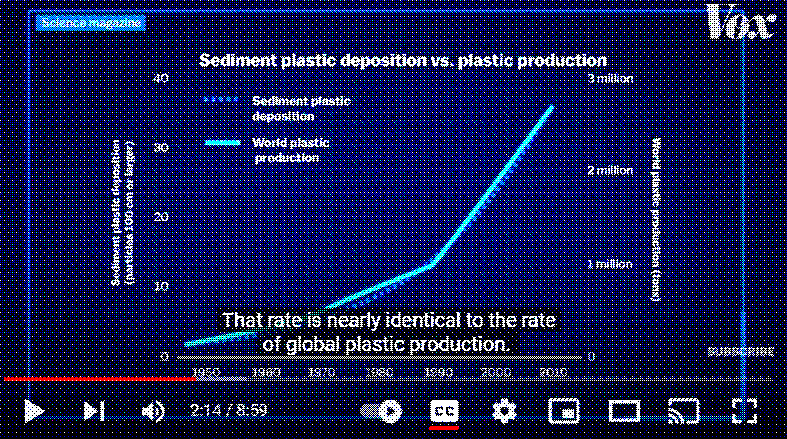
Many ocean plastics are fairly new and…WE CAN TAKE THEM OUT!
It’s been found that much of it lies within 100 miles off shore. And this presents a solution. It turns out that long before plastics in ocean water floats to the massive gyres or sinks to the bottom, it washes up onto beaches, then waves wash it back out again. So much of what we see on the beach has gone through this process many times. It gets broken down a little bit more each time. See this video for details.
This means that doing beach clean-up does remove plastics from this cycle. It lessens the chance that plastic makes it further out to harm more animals. And less breaks into smaller pieces to become microplastics—so even less gets ingested by animals.
I kind of made up for losing that provolone cheese bag I’d lost to the wind on the cliff. A few years later when I was walking along the beach, on a windy day, I spotted a bag flying along the beach. I was suffering a painful knee injury then but when I saw that bag I had to make up for the one I had lost to the sea. I ran as fast and hard as I could, hobbling, and caught it. It was the least I could do.
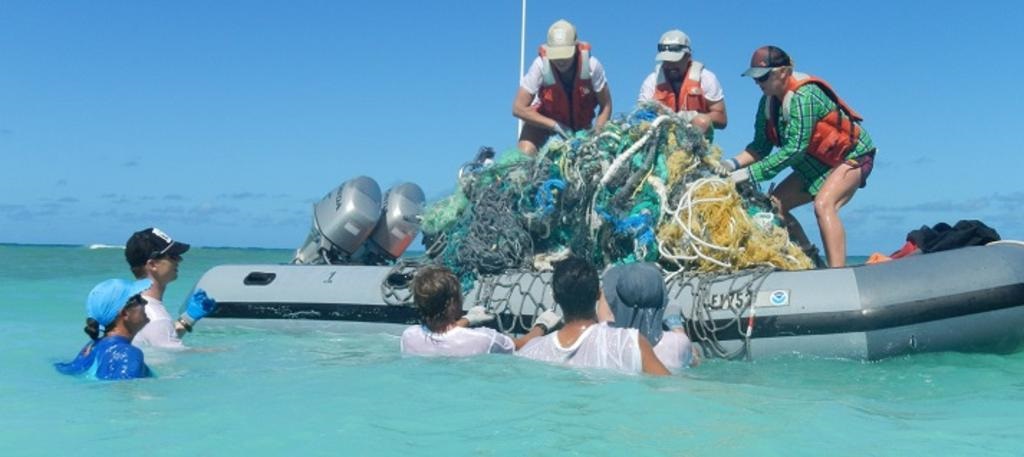
How you can help solve the problem
If nothing changes there could be more plastic in the ocean than fish by 2050
~Ocean Conservancy

More and more plastic is ending up in oceans every year. Every one of us can change our ways to stop this.
Here’s how to make changes now:
1. Use less plastic
The majority of plastic waste in oceans, up to 50%, is single use plastic. There are so many ways to avoid using them. We did for so long, until only recently as more single use packaging has become available in just the past decade. Here is a guide from LessPlastic.org in the UK, on ways to do so.
2. Help with beach clean-ups! International Coastal Clean-up Day is the third Sunday in September each year
Participate in big events or do it on your own when you go to the beach. As I said earlier, I bring a bag with me to collect any plastic I see every time I go to the beach. And taking it from the beach does help. If everyone who could do it did, it would make a difference. (When others see you it will rub off on them, they may pick up the habit, too!)
3. Choose sustainable, non-plastic packaging wherever possible
Ask your favorite brands to adopt more sustainable packaging. Most are willing to but won’t change unless pressured by customers.
Many companies want to do better to help the plastic problem, and they need to know that that is what we want. Let your favorite brands know what you want.
MacDonald’s listened to its customers and environmental groups when it switched from Styrofoam sandwich boxes to paper packaging in 1990 and from Styrofoam cups in 2012. Brands listen!
4. Recycle plastics wherever you can
But only 9% of plastic is actually recycled. One of the reasons is insufficient infrastructure in many localities. Another reason is contaminated plastics—many are too dirty or mixed with too much trash. This causes whole truckloads of collected material to go to the landfill rather than getting recycled. Check with your municipal waste system to see what is needed for best recycling. Use, but don’t misuse, public recycling receptacles.
5. Biodegradable plastics are better, but…
…if they land in the ocean, like my provolone cheese bag did, it could still do plenty of harm to any animal that comes across it and inadvertently ingests it before it biodegrades. Home compostable plastics are good if you are someone who composts. Municipal compostable plastics are good if there is the infrastructure to do that. It’s a great start but I fear we may be a long way off from that being put to best use.
6. Dispose of waste plastic carefully
so it doesn’t become ground litter, wind borne, or water borne.
7. Pick up litter from the ground
Litter on parking surfaces gets washed through storm drains and continues to rivers and to the oceans. Yes, it’s so unpleasant to do this one. But I keep a pair of thick gardening gloves in my car and a spare bag.
8. Push for legislative change
Plastic bag bans reduce bags blowing into the ocean. Push for legislation that improves recycling infrastructure. Push for legislation that shifts to sustainable and saner packaging. Push for greater consumer education.
9. Support organizations that advocate to keeping plastics out of the oceans
See a few of them below.

Concern about plastic pollution is also at an all- time high:
81% of the world reports concern for the effect of plastic on the environment.
66% of U.S. consumers have a more favorable views of companies woking to reduce plastic waste.
55% feel that companies are not currently doing enough
More than ⅔ of Americans have reported being willing to pay more for everyday items made sustainably vs single-use plastic.
To date, 77 countries around the world have passed a full or partial ban on plastic bags.
~ Oceanic Society
Taking action makes a difference
There’s a lot that we each can do to help the problem of plastics in oceans. Learning more about the problem is a start. It can be depressing, but that’s because it is an urgent problem. And it won’t help to put it aside in your mind.
The health of our oceans is vital to life on earth. And it’s vital to our children’s and grandchildren’s lives.
You care about it. Now you can act.
Clean up a beach. Even if it’s a river.
Do you live inland far from a beach? Clean up plastics from wherever you are because on any surface, pieces of plastic can still make it into waterways and even on down to the ocean.
Shy about looking weird?
So what? Explain what you’re doing and others just may join you. Gather a following.
Take inspiration from these people who have done so much on their own by doing simple beach clean-up. There’s a 70 year old grandmother who cleaned a beach a week and won’t stop, a 40 year old veteran who picks up litter and helps his mental health, two 20-something friends who cleaned up surfing beaches and started a non-profit, and more.
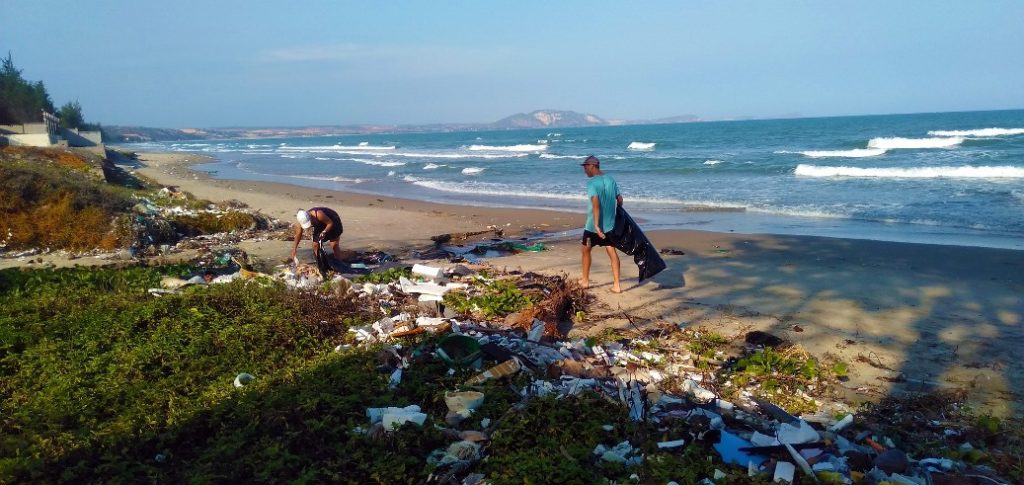
Sergie Tokmokov plastic cleanup via pixabay
Aren’t the oceans of our planet worth the effort? Act for a healthier planet for our children and grandchildren.
Choose your ways to take action to help solve this problem. Young or old, we all can change things for the better.
Knowledge of the problem lets us know what to care about.
Caring leads us to action.
Action makes a difference.
Take action. And bring the kids.
Related Reading
What are Microfibers? Where do They Come From? Why are they a Problem?
Just Stop Wearing Plastic Clothes
Ocean Acidification—What It Is, What’s Causing It, and What Can We Do?
*Organizations that work to help solve the plastics in oceans problem:
LessPlastic.org: helps individuals, organizations, and businesses learn how to use less plastic. They offer a Less Plastic Pledge to get you started.
Ocean Conservancy : They bring science to legislature and land use planning to protect oceans and coastal areas.
Oceanic Society : Working to educate about the ocean and the problems they face, and they’ve got opportunities for sustainable eco-tourism travel!
surfrider.org: They educate and help organize events, including International Beach Cleanup Day, have many chapters to join, and inspire activism for beach and coastal protection.
Condor Ferries : This is a British ferry company that does ferrying across the English Channel and bookings to vacation destinations on the Channel Islands and coastal France. Their concern about the ocean is deep and this link is to their website page that’s all about plastic in the ocean. It’s got a lot of information!
A video to watch about the first known Pacific Gyre, is The Great Pacific Garbage Patch. You can find it on Amazon Prime. It shows the extent of damage that plastics can have on wildlife in and around the oceans.
Another thorough film is The Story of Plastic. Also on Amazon Prime. Be sure to find the one that was awarded an Emmy. It is a timeline through the whole evolution of our plastic problem.
Main References:
*International Union for Conservation of Nature (ICUN)
